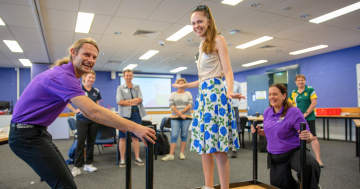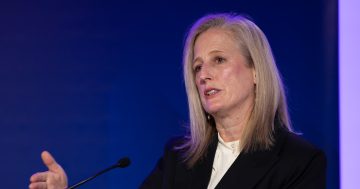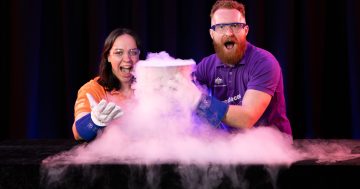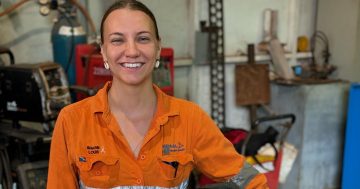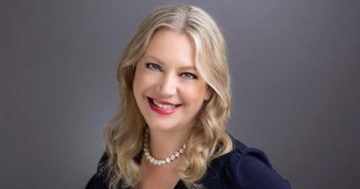Rashina Hoda* discusses her efforts to address the wider diversity crisis in STEM.
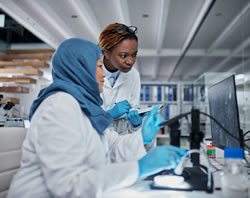 “You can’t be what you can’t see” is the motto of Science and Technology Australia’s Superstars of STEM program.
“You can’t be what you can’t see” is the motto of Science and Technology Australia’s Superstars of STEM program.
When I was first selected as one of 60 women to join its 2021-22 cohort, little did I know this phrase would become my “North Star”.
The program has led me on an incredible journey of self-discovery and sisterhood in Australia.
We received intensive media and communications training, learned to stare down the imposter syndrome together, challenged conventional career choices, and exchanged ideas with policymakers.
Finally, when it was time to step into the field to inspire the next generation, I was nervous.
What do I say to the young girls? Which schools do I go to?
I could start with my children’s schools, or those in my neighbourhood.
Who wouldn’t want a friendly-neighbourhood-”Superstar of STEM” to come to their school, right?
But a chance encounter changed my perspective and sent me up a road less-travelled.
Shazia (not her real name) is a housewife and mother of three in Melbourne.
When we were introduced to each other at a weekend lunch, we appeared incredibly similar on the surface – both hijab-wearing Muslim women, wives and mothers, and both from the Indian subcontinent, speaking English and Urdu, settled and raising our families in Melbourne.
Behind our veils, things were very different.
She struggled to understand how I could be working in the mainstream Australian workforce while being a hijabi Muslim woman.
I struggled to understand why her family would stop her girls from attaining higher education in mainstream high schools and universities due to certain cultural norms.
It was like looking into the mirror and asking, “Who are you?”
Muslim women are known to have made hugely significant educational and scientific contributions.
Fatima al-Fihri, a Muslim woman scholar, is recorded to have established the first university in the world, the University of Al-Qarawiyyin, in 859AD in Morocco.
In recent times, astrophysicist Dr Burçin Mutlu-Pakdil is responsible for the discovery of a galaxy now named after her.
Why aren’t there more? Where are the Muslim girls and women in STEM?
Outreach program with schools
I decided to get to work and focus my outreach efforts on Muslim girls.
Through the help of an old friend, Aneesa Adam, and her contact, Sister Aynur Simsirel, Principal Consultant at Independent Schools Victoria, I visited five Islamic schools in Melbourne – in North Coburg, Caroline Springs, Keysborough, and Epping.
Through terms two and three of 2022, I spoke to more than 450 girls, ranging from years 7 to 12, to share my passion and STEM journey.
I was welcomed warmly by the principals and teachers, and I was impressed by the curious, bright, enterprising and eager young girls in these schools.
Our interactions became profoundly moving and fulfilling experiences for me and for the girls.
One wrote later: “It was nice to see the STEM field from the eyes of someone who I could relate to as a person.
Dr Rashina is a Muslim from an Indian background, and I’m Muslim and Pakistani, so it was great to know that someone who looked like me and held the same beliefs as I did was not only welcome in the field, but also could achieve great things.”
Supported by the Superstars of STEM program and my Faculty of Information Technology at Monash University, I was able to be a role-model Muslim woman in STEM for these girls, something I didn’t have growing up.
It gives me hope to think they can be a woman in STEM like me in the future.
But I’m just one individual, and Muslim girls are one among many minority groups underrepresented in STEM in Australia.
A wider diversity crisis
There’s a wider diversity crisis in STEM, and diversity is important, not just ethically and socially, but also economically.
Consider how manufacturing industries have progressively diversified their range of consumer products in the past decade or so.
From “clean” toothpastes and “green” washing liquids, to sticking plasters in different skin tones, there’s a mass awakening of industries to the full spectrum of the human experience and planetary needs.
The same is true for my area of expertise – software engineering.
Irrespective of size and revenue, most software and technology companies hope for mass use of their products and services, be it by social media platforms, e-commerce, or digital health.
But this isn’t possible unless they take the diversity of their users into consideration when developing their products and services.
For example, the lack of representative datasets used to train artificial intelligence models can lead to all sorts of biases emerging in the software they support.
One such case was seen in gender identification software, based on analysing photographs, performing significantly worse for women, and drastically worse for darker-skinned women, including world-renowned figures – a racial bias.
Beyond the need for diverse user representation, there’s a stronger argument in favour of diversity.
The principle of “requisite variety” suggests we need at least as much variety within the team as it’s expected to deal with externally.
In simple terms, it takes a diverse team to create products for diverse users and usage scenarios.
A team of software developers that’s not diverse is likely to be unaware and even unconsciously biased in its approach to software development.
Achieving desirable traits in the software, such as accessibility, usability, privacy, human-centeredness, and sustainability, requires not only a consideration of the diversity of software users, but also a conscious effort to create diverse software teams.
Are we there yet? When it comes to diversity and gender balance specifically, the short answer is no.
A pipeline issue
The proportion of women in STEM is low.
It’s a pipeline issue – not enough girls choose STEM subjects at school, not enough graduate with STEM degrees, and not enough choose to be or stay in a STEM career.
The situation is worse for girls and women of racial, ethnic, cultural, and language-diverse backgrounds.
In Australia, girls (21 per cent) are half as likely as boys (42 per cent) to aspire to a STEM career.
Nine out of 10 STEM-qualified women in Australia don’t work in STEM fields five years post-graduation.
Last year, the Minister for Industry and Science, Ed Husic, emphasised a commitment to include diverse women in STEM as it “is not only the right thing to do, it will also deliver a huge boost to our national economy – $60 billion over the next 20 years”.
Efforts to improve the representation of women in computer science and software engineering disciplines have been underway for decades in schools and universities.
Many software companies are committed to flexible work arrangements and generous paid maternity leaves in an effort to close the gap at work.
Progress has been made with programs such as Girls Who Code, Code Like a Girl, Robogals, STEMSisters, and Girls in STEM Toolkit.
Sadly, the statistics have been grim in most countries, with women being underrepresented in STEM subjects.
Representation of women in the technology workforce was predicted to reach only 22 per cent in large technology firms in 2022, a hard-earned 2 per cent improvement over 2019 figures, but still far cry from the desired parity levels.
Meanwhile, in some developing countries, trends are reversing, with more girls increasingly selecting computer science and software subjects, such as an approximate 40 per cent rise in India.
A UC Berkeley research study reported encouraging new trends of Latina women closing the gender gap, and African American women outnumbering men in technical college entrance exams using advanced-placement courses in high schools.
These are promising trends, but there’s a long way to go, and what they’re doing right is worth investigating.
A bittersweet experience
The school outreach experience left me feeling bittersweet.
While I’m disappointed by the continued lack of representation of girls and women from diverse backgrounds in STEM, I’m also hopeful for the future, seeing the enthusiasm and potential displayed by the girls.
Yes, there are fewer women than men in software engineering today.
But we must change that, and it starts with inspiring the curious young minds in the schools today.
It’s time we acknowledge that more women from diverse backgrounds need to be represented in STEM, and, perhaps more importantly, how desperately STEM needs more women.
*Rashina Hoda, Associate Professor, Department of Software Systems and Cybersecurity, and Deputy Director of the HumaniSE Lab, Faculty of IT.
This article first appeared at lens.monash.edu


